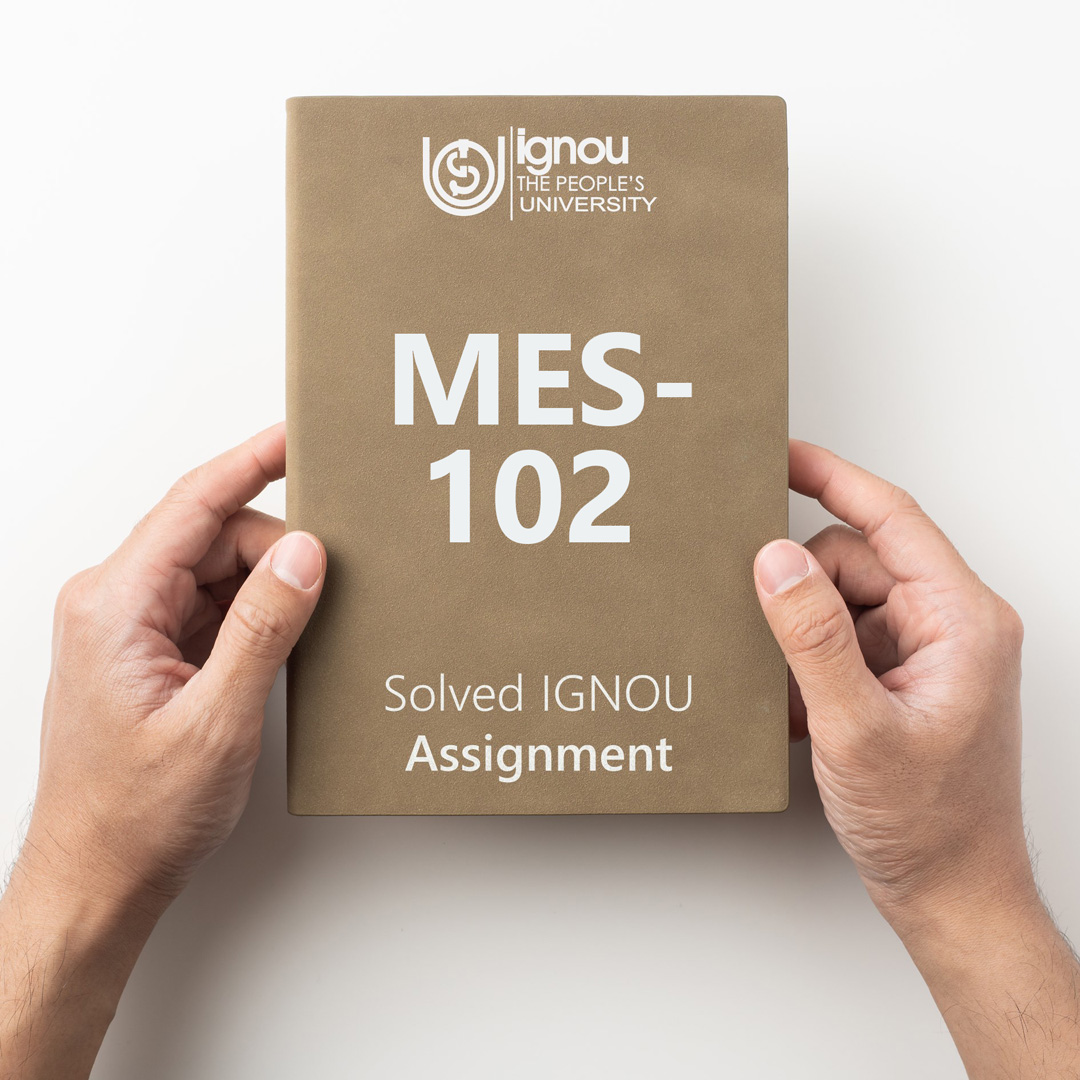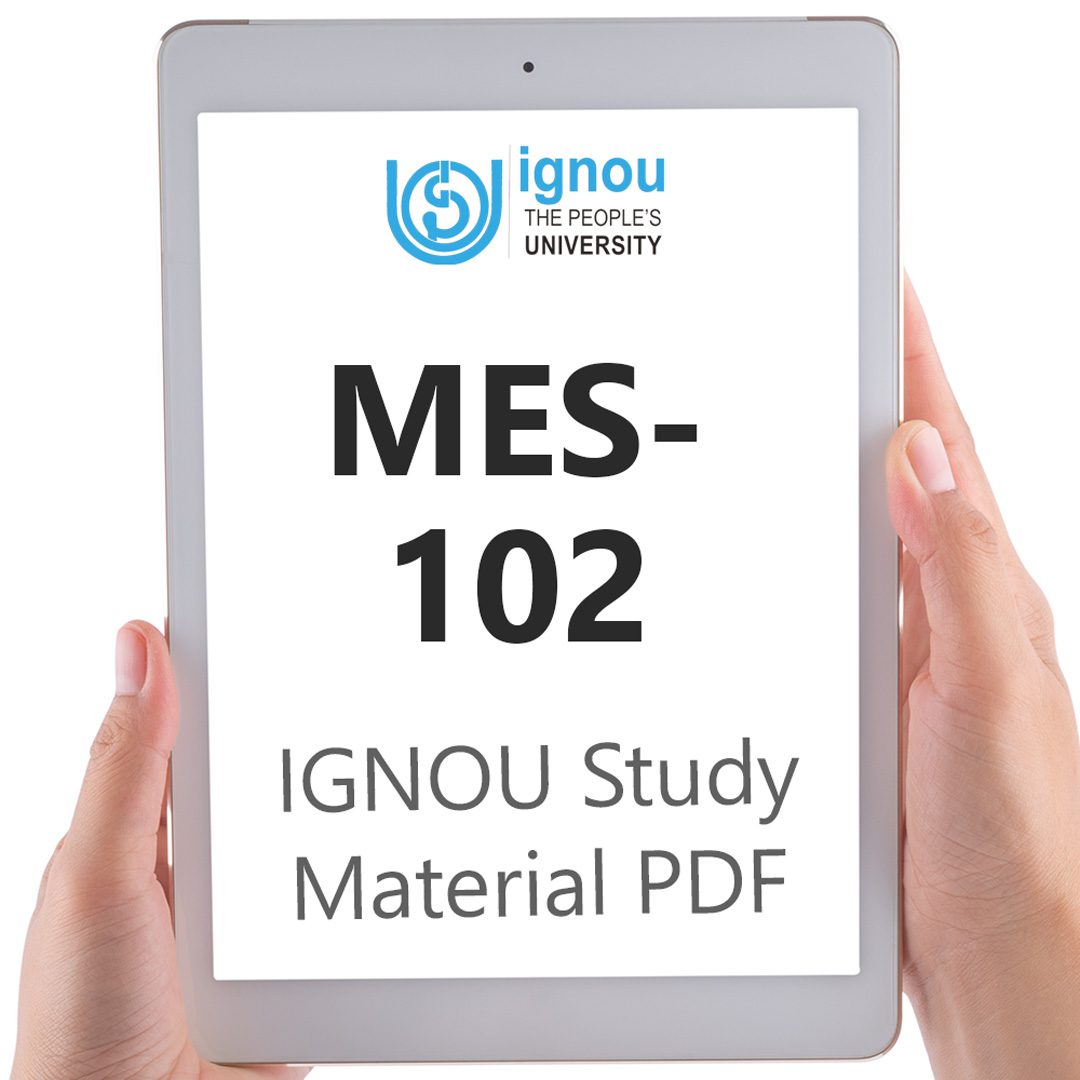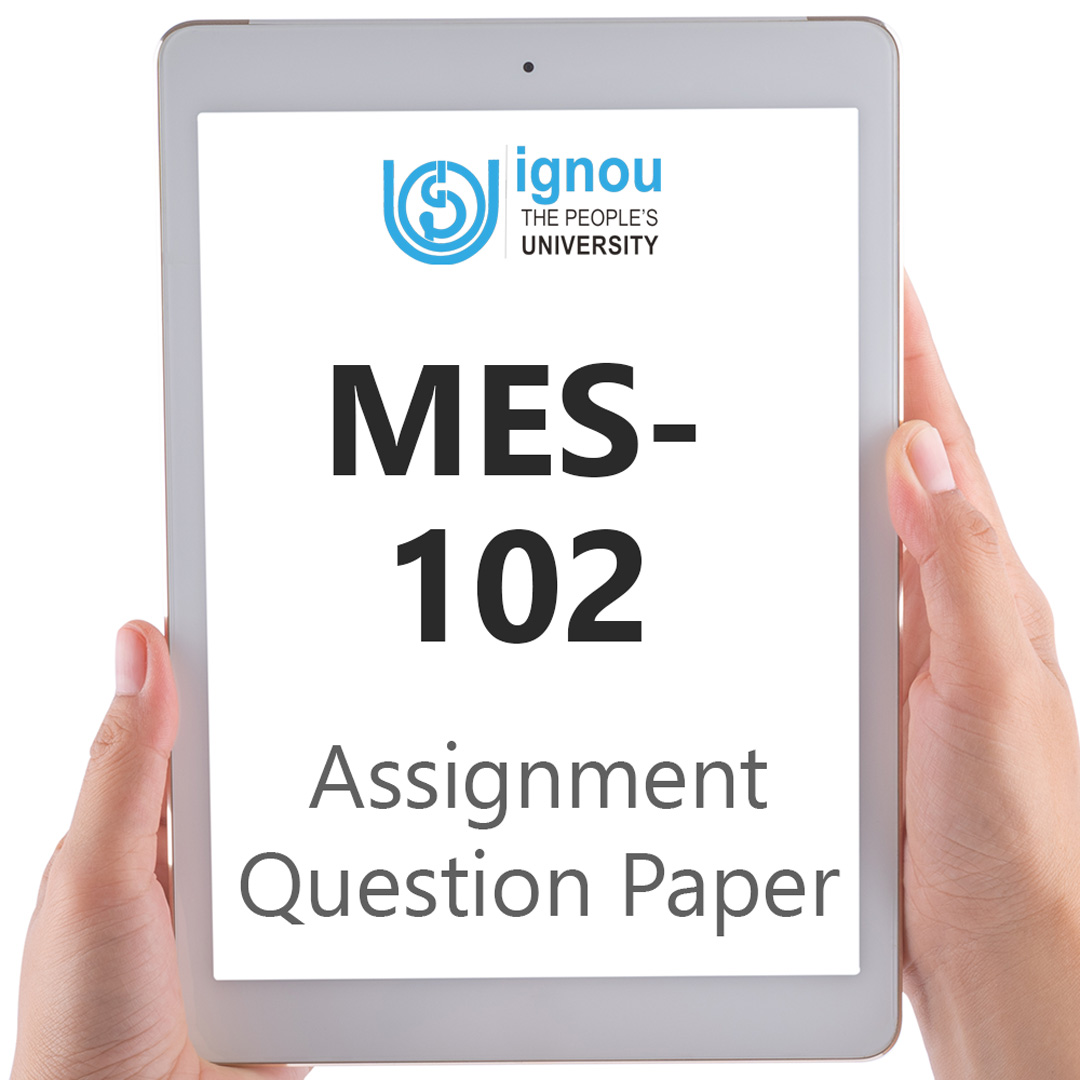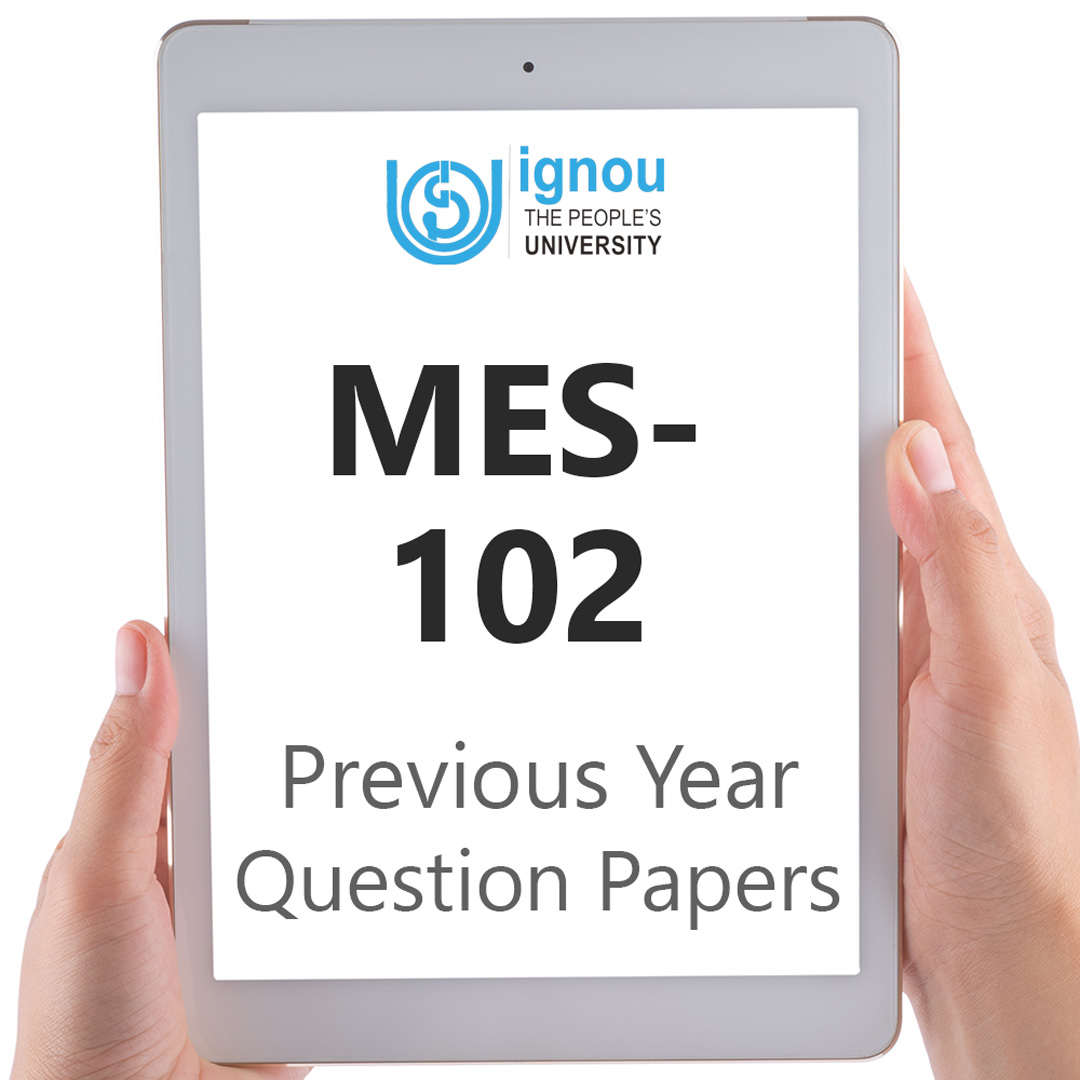If you are looking for MES-102 IGNOU Solved Assignment solution for the subject Instruction in Higher Education, you have come to the right place. MES-102 solution on this page applies to 2023 session students studying in MAEDU, PGDHE courses of IGNOU.
MES-102 Solved Assignment Solution by Gyaniversity
Assignment Code: MES-102/TMA/2023
Course Code: MES-102
Assignment Name: Instruction in Higher Education
Year: 2023
Verification Status: Verified by Professor
a) Describe the phases of a lecture. Suggest how a teacher of higher education can improve his/her skills of lecture in classroom. (500 Words)
Ans) A lecture is a common form of instruction in higher education, and it typically involves a speaker presenting information to a group of students. The lecture process can be divided into three main phases: the introductory phase, the development phase, and the consolidation phase.
The Introductory Phase: The introductory phase is the first part of a lecture. This phase helps to set the tone for the rest of the lecture and grab the students' attention. In this phase, the lecturer checks the entry behaviour of the students and makes sure they are ready to learn. They also relate the new topic to the topic already taught, provide an advance organizer, arouse interest and motivation in the students.
The Development Phase: The development phase is the main part of a lecture, where the lecturer presents the core information. The lecturer may use analogies, illustrations, aids to explain the topic. The lecturer should also convey their enthusiasm for the material and be conversational to sustain student attention. They can also use various techniques to sustain student attention, such as asking questions, providing examples, and changing the pace of the lecture.
The Consolidation Phase: The consolidation phase is the final part of a lecture. In this phase, the lecturer summarizes the key points and checks if the students have understood the material. They also establish the achievement of goals and output specifications. The lecturer can also give assignments to reinforce the learning and relate the topic to future learning.
A well-structured lecture has three phases: introductory, development, and consolidation. In the introductory phase, the lecturer sets the tone and grabs the students' attention, in the development phase, the lecturer presents the core information using various techniques to sustain attention, and in the consolidation phase, the lecturer summarizes the key points, checks for understanding and gives assignments to reinforce learning.
Strategies that Can Help a Teacher of Higher Education to Improve their Lecture Skills
Plan and Organize the Lecture: Effective planning and organization of the lecture can help a teacher to deliver a clear and concise presentation. Teachers can use a lesson plan, outline or mind map to structure the lecture content. This can help the teacher to stay on track, cover all the necessary material, and deliver a coherent lecture.
Engage with the Students: Engagement is critical in the lecture process. Teachers can use interactive techniques, such as asking questions, facilitating group discussions, or using technology, to engage students. This helps to create a more dynamic and interactive classroom environment that keeps students attentive and interested.
Use Multimedia and Visual Aids: Multimedia and visual aids can help teachers to convey complex information in a more digestible form. Teachers can use slideshows, videos, and other visual aids to illustrate key concepts, support the learning process, and enhance the lecture.
Practice Delivery: Practice is crucial to mastering any skill, including lecture delivery. Teachers can practice their delivery skills by recording and reviewing their lectures or presenting to colleagues. This can help the teacher to identify areas for improvement and develop more confidence in their delivery.
Seek Feedback: Feedback from students or colleagues can provide valuable insight into the effectiveness of the lecture. Teachers can ask students for feedback on the lecture content, delivery, and engagement techniques. This can help the teacher to identify areas for improvement and adjust their lecture style to better meet the needs of their students.
Attend Professional Development Opportunities: Teachers can attend professional development opportunities, such as workshops or conferences, to learn new strategies and techniques for improving their lecture skills. These opportunities can provide valuable insights and resources for enhancing the quality of the lecture.
b) What is meant by Item Analysis of test items? Describe how item analysis is carried out for items in a norm-referenced test. (500 Words)
Ans) After a test has been graded, it is good to look at how well the different questions or items worked. This can be done by looking at what the students said about each item. Item analysis is the name for this kind of process. When done in a planned way, item analysis would give information about the following:
How hard it is to do something.
How well the item can tell things apart.
How well each alternative works.
Through item analysis, we can find out if an item were too easy or too hard, how well it could tell the difference between high and low achievers, and how well the different options worked. Such information could help improve the items so they can be used again in the future. The teacher also gets useful information from item analysis for providing feedback to students regarding their performance in the test.
Analysis of Criterion-referenced Tests
The item analysis procedures used for norm referenced test item s are not applicable to criterion-referenced mastery tests. Criterion-referenced tests are not meant to rank students based on how well they do on tests. Instead, they are meant to describe the learning tasks that students can do.
Since the point of criterion-referenced tests isn't to tell who is smart and who isn't, the discriminating index of an item, as described above, isn't very useful for making these kinds of tests. In criterion-referenced tests, the level of difficulty of each question should be based on the learning outcome it is meant to measure. So, if a learning task is of moderate level of difficulty, the test item designed to measure it. should possess a moderate level of difficulty. The standard formula for figuring out how hard something is can be used to figure out how hard criterion-referenced test items are, but the results are not used to choose items or change how hard they are. If the teaching is good, most items on a criterion-referenced mastery test should have a high difficulty index, which means that a high percentage of students should pass the test.
Regarding the discrimination index in a CRT, one would expect that more students in the upper group would get the question right than those in the lower group. In other words, if the discrimination is negative or low, i.e., if more students in the lower • group are getting the item correct, the test function Object() { [native code] } should look into the item as it indicates that the more intelligent students-the high achievers are getting punished. Thus here, the logic of revising an item is the same as in NRT, the only difference being that a function Object() { [native code] } of a CRT will not make special efforts to get items of 50 per cent difficulty level or of high discrimination, because his purpose is not to rank students, or for that purpose, to discriminate between them. His purpose is only to see how far his students have achieved the stipulated instructional objectives or expected learning outcomes-for which the teaching/instruction was devised.
A crucial question in judging the effectiveness of a criterion-referenced mastery test is, "to what extent did the test item measure the effectiveness of the instruction?" This question may be answered by testing the students before and after the instruction and comparing the results. For this purpose, the students need to be administered a pre- and post-test, which measures the sum,' learning outcomes. A simple item-by-item chart can be made to compare how students did on the pre-test and the post-test.
c) Choose an undergraduate programme of your choice. You are interested in improving the same programme by applying the concepts related to systems approach to instruction. Describe the various steps that you would take while developing the instructional system for the same programme. (500 Words)
Ans) The steps that can be taken to improve the Bachelor of Mass Communication programme using the concepts of the systems approach to instruction are as follows:
Define the Objectives and Goals of the Programme: Find out what the overarching objective of the programme is, as well as the specific academic achievements that are expected of the students who are enrolled in the class.
Analyse the Needs and Characteristics of the Learners: Conduct a needs analysis in order to determine the characteristics of the students who will be participating in the programme and the learning needs they have. Think of things like their age, their academic experience, their motivation, their learning styles, and the information they already know.
Develop a Curriculum Map: Make a curriculum map that specifies the program's scope and sequencing, including the subjects that will be taught, the amount of time that will be spent on each topic, and the specific learning goals that are linked with each item.
Design and Develop Instructional Materials: Create a variety of learning tools that can be used by students with varying preferences for how they absorb information, such as lectures, videos, case studies, and hands-on exercises. Make use of these resources to assist students in acquiring the knowledge and abilities necessary to accomplish the goals of the programme.
Implement the Programme: The programme should be put into action by providing the pupils with the necessary educational materials. Formative assessments should be used to track student progress, and comments should be provided to assist students in improving their overall performance.
Evaluate the Programme: Conduct a comprehensive study with the objective of establishing how effectively the programme as a whole has been able to accomplish its aims. Make use of this evaluation to determine the areas that want improvement, and then adjust the programme in accordance with the conclusions of this evaluation.
Continuously Improve the Programme: Make use of the feedback collected from both formative and summative evaluations in order to ensure that the programme is continually improved. Changes to the program's curriculum, instructional materials, and delivery methods could be among these enhancements.
By adhering to these steps and applying the concepts of the systems approach to instruction, the Bachelor of Mass Communication programme can be designed and implemented in such a way that ensures students will be able to achieve the desired learning outcomes and develop the skills they will need in order to be successful in their future careers. This can be accomplished by applying the concepts of the systems approach to instruction. Following these steps and implementing the ideas presented in the systems approach to teaching will allow you to successfully attain this goal.






